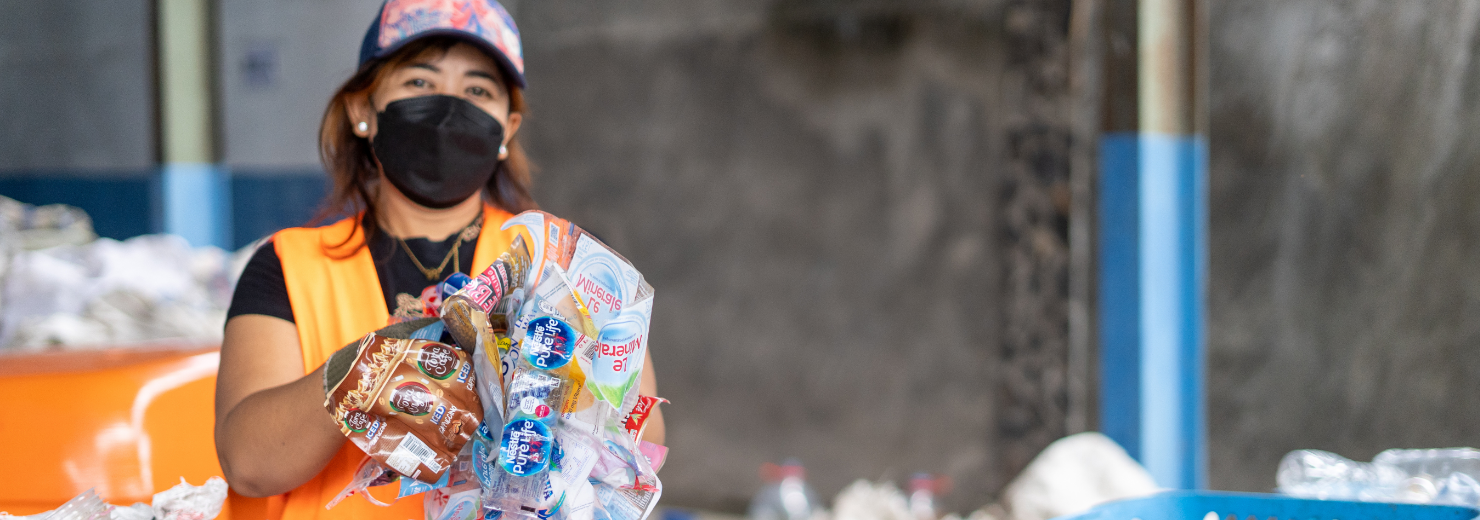Key actions needed to advance innovation and investment in ASEAN’s plastics circular economy
-

-
Ellen Martin
-
November 2, 2022
-
5 min read

Ellen Martin
November 2, 2022
5 min read


The 7th International Marine Debris Conference held in the Republic of Korea in September 2022 provided a timely and critical platform for discussions on public and governmental agendas as we approach the first Intergovernmental Negotiating Committee meeting to commence the task of developing a legally binding instrument on plastic pollution. The event brought together governments, industry, academia, civil society, and all relevant stakeholders to unpack the latest solutions for plastics circularity and catalyze action against marine litter and pollution.
I moderated a panel organized by the World Bank Group and The Circulate Initiative to explore the challenges and opportunities to drive investment and policies to scale plastics circularity innovation in the Association of Southeast Asian Nations member countries (ASEAN).
Following were the key takeaways from the panel discussion:
Priority should be placed on infrastructure to curb plastic waste leakage in ASEAN
Inadequate infrastructure contributes significantly to Southeast Asia’s plastic pollution problem, especially in the sourcing, cleaning, and processing of plastic waste. This results in the leakage of plastic into the environment and presents a missed opportunity to capture and maximize the full value of waste in the region’s economy. While landfill and incineration may appear to be short-term solutions, with sufficient investment and support, emerging markets can build adequate waste management and recycling infrastructure that sustains the value of commodities in the waste stream in the long term.
Advance the circular economy through knowledge sharing
Due to Southeast Asia’s diversity, a tailored approach is needed for countries at varying stages of circularity. However, there is value in knowledge sharing for countries that are at the start of their plastic waste management journey to learn from those within and outside the region who have successfully implemented adequate policies and programs to advance the circular economy. Ensuring a sufficiency of quality feedstock to facilitate recycling, for example, is uniformly problematic, and learnings can be drawn from each market’s experience on approaches to help drive demand for these materials.
Investment from all sources – from development finance institutions to the private sector – is needed to fund waste management infrastructure in ASEAN
The efforts of a single actor are insufficient to build the needed systems. While the public sector takes on the responsibility of building foundation waste collection services and operations, private funding sources are needed to bolster efforts to match the scale of the plastic pollution problem. In addition, blending public and private capital can go a long way in derisking investments and setting the stage for more funding. We are observing positive developments and commitments from both players, such as approval of a US$20 million grant for the World Bank’s Southeast Asia Regional Program on Combating Marine Plastics (SEA-MaP) program, which will involve multi-stakeholder efforts at both regional and country levels. Beyond financing, businesses are also needed to drive innovation across the value chain, while governments can use several regulatory tools to incentivize or provide a pull factor for new solutions.
Promulgation and enforcement of facilitating policies are essential to create an enabling environment for innovation and investment
Taking the Republic of Korea as an example, supportive regulations have been in place for decades, ranging from banning single-use plastics and discouraging hard-to-recycle ones to frameworks promoting resource circulation and recycling industries. The resulting impact, with the Republic of Korea achieving one of the highest recycling rates globally, reflects a clear understanding of key stakeholders within the ecosystem and their needed contribution. As a result, the government was able to introduce schemes that expanded their responsibilities in recycling, reusing, and reducing while supporting the shift towards circular practices. Recent developments in Extended Producer Responsibility policies across Southeast Asia, such as the passing of new laws in the Philippines and Vietnam, will also help to create market demand for businesses in waste management and recycling, reinforcing the sector’s positive growth prospects and attracting investor interest.
Create a sustainable market to attract participation from stakeholders
An effective transition to circularity needs close partnerships among public and private players, and establishing a market with strong growth prospects and a pipeline of investible solutions is key to attracting participation from investors. Governments have a key role to play through the introduction of supportive policies that encourage demand for recycled and circular materials, as well as providing incentives to see companies innovate and take leadership in this space. They can also facilitate investments in the circular economy or by investing directly – via bilateral and multilateral assistance funds – in innovators and entrepreneurs across formal and informal sectors.
Conclusion
The circular transformation of the plastics value chain can be brought to life only when the entire ecosystem works together to scale infrastructure and innovation that will help to mitigate leakage and redefine the future of waste. With the plastic pollution problem gaining global attention, the panel agreed that now is the time to catalyze progress and address systemic gaps.